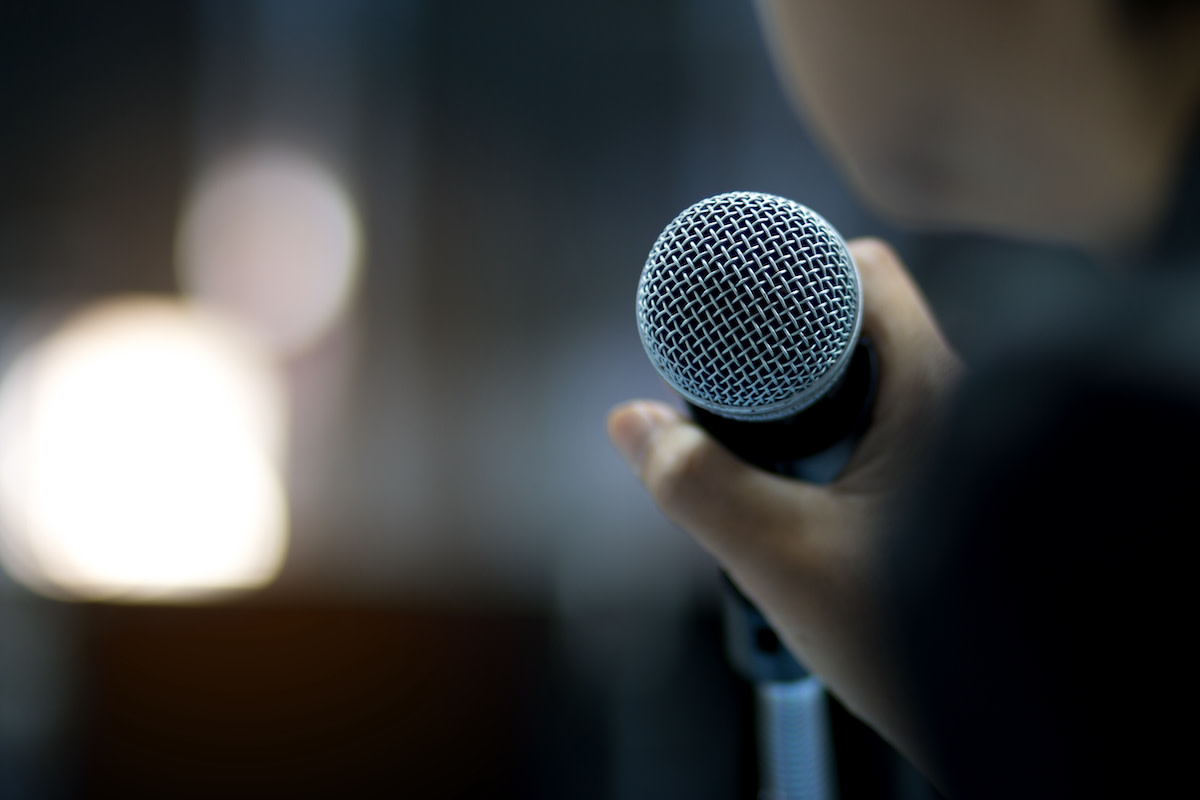Slam Poetry: 10 Notable Slam Poets
Written by MasterClass
Last updated: Nov 23, 2022 • 4 min read
An energetic form of poetry, slam poems are spoken-word material performed in competition.
Learn From the Best
What Is Slam Poetry?
Slam poetry is a type of spoken-word poetry that poets perform live at competitions called poetry slams. A slam poem is a performance art piece where speakers engage in powerful self-expression focusing on both content and sound—this can have a rhyme scheme or be unrhymed (free verse) and may contain elements of hip-hop, folk music, or jazz to enhance the rhythmic presentation. Slam poetry performances require participants to memorize their poems, have expressive body language (like gestures), enunciate, and make eye contact with the audience. In a poetry slam, slam poets perform their work for viewers and a panel of judges, competing in multiple rounds to reach the top position.
Brief History of Slam Poetry
While spoken-word and performance poetry have existed since antiquity, the poetry slam as a modern art form has its roots in the 1980s:
- 1984: Slam poetry first arose in 1984 as an idea of poet Marc Smith, who wanted a way to break poetry out from the stiffness of academic poetry readings and offer it to a broader and more diverse audience of listeners and writers. Smith held the first poetry slam in Chicago in November 1984.
- Late 1980s: After Smith’s inaugural poetry slam, local slams began to pop up in nearby venues—in 1987 in Ann Arbor, Michigan, as the Ann Arbor Poetry Slam, and by Bob Holman in 1988 to New York City’s Nuyorican Poets Café.
- 1990s: In 1990, the first National Poetry Slam took place, with poets from all over the United States traveling to San Francisco to compete for audiences. By 1999, the National Poetry Slam was well-known, and several prominent news stations recorded and broadcasted the event.
- Today: Since the spread of poetry slams both nationally and internationally, slam poetry has become a major force in the literary world. There are several major events for annual slam competitions—including the US’s National Poetry Slam, the European Poetry Slam Championship, the individual World Poetry Slam, the Poetry Slam World Cup, and the Women of the World Poetry Slam—as well as regular local events happening in communities all over the globe.
Conventions of Slam Poetry Competitions
While there are no official rules that all slam poetry events must follow, there are a handful of common conventions:
- A time limit: Most poetry slams enforce a time limit to ensure all the performers have enough time. Three minutes is a standard.
- Judges from the audience: One of the prevalent features of a poetry slam is the panel of judges, typically composed of randomly selected members of the audience. These judges evaluate the poets based on content and performance.
- A numbered points system: During the competition, the panel of judges offers point values to grade each poet’s poem and performance. These points—usually out of ten—add up to determine whether or not the poet will advance to the next round or become the champion.
- Several rounds of competition: Most poetry slams include at least three rounds of competition, in which the pool of poets becomes narrower until two poets remain, competing for the top spot.
- Audience participation: Poetry slams are not supposed to be stiff, formal venues, and audience members often get involved in the performance, clapping, making noise, and offering energy to the poet during the performance.
Notable Slam Poets
Many poets powerful writing and performances make them stand out—here are some notable slam poets and their most popular original works:
- 1. Harry Baker: Harry Baker is a British slam poet whose poems discuss his path from math major to full-time poet. Notable slam poems include “Impossible” and “A Love Poem for Lonely Prime Numbers.”
- 2. Alex Dang: Alex Dang is an Asian-American slam poet whose poems discuss identiy, gender, and relationships. His notable works include “What Kind of Asian Are You?” and “Super Gonzo.”
- 3. Rudy Francisco: Rudy Francisco is a slam poet from San Diego, California. His notable poems include “Complainers” and “Rifle.”
- 4. Denice Frohman: Denice Frohman is a queer slam poet with roots in Puerto Rican and Jewish culture. Her poems interrogate sexuality, gender, and race; notable works include “Accents” and “Puertopia.”
- 5. Sarah Kay: Sarah Kay is a slam poet with roots in both Japanese and Jewish culture. Notable slam poems include “Hands” and “Hiroshima.”
- 6. Phil Kaye: Phil Kaye is a Japanese-American slam poet from California. Notable slam poems include “Surplus” and “When Love Arrives” (performed with friend Sarah Kay).
- 7. Shane Koyczan: Shane Koyczan is a Canadian slam poet who writes about social issues, especially of youth and high school students. Notable works include “To This Day” and “We Are More.”
- 8. Ed Mabrey: Ed Mabrey is a Black slam poet who lives in Charlotte, North Carolina. His work deals with the injustices of the American social system. Notable poems include “Dear White People” and “Pursuit of Happyness.”
- 9. Taylor Mali: Talyor Mali is a slam poet from NYC. Notable poems include “What Teachers Make” and “I Could Be a Poet.”
- 10. Anis Mojgani: Anis Mojgani is a slam poet. Notable poems include “Shake the Dust” and “The Fisherman.”
Want to Learn More About Writing?
Become a better writer with the MasterClass Annual Membership. Gain access to exclusive video lessons taught by the world’s best, including Billy Collins, Joy Harjo, Neil Gaiman, Walter Mosley, Margaret Atwood, Joyce Carol Oates, Dan Brown, and more.
